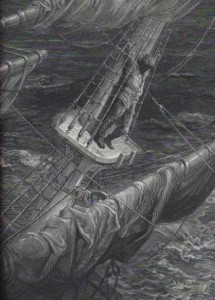I am constantly amazed by the quality of the writing my students turn in. The honesty of the reflection, the clarity of the writing and the elegant turns of phrase. Certainly better than anything I’ve ever churned out. I sometimes find it difficult to advise them on their pieces because their work is often so good that they’ve gone past issues of mechanics and my comments are purely my subjective opinions (and I’m clearly no expert). I have some serious writers in my class, so I was not too surprised when one of them asked me the other day if there were any venues to publish their work.

A little online searching turned up a few places that might by worthy venues for the serious writer, however, I have a few biases that narrow down the possible candidates even more. Of course the publication needs to be serious about publishing good work. In the online world anyone can self-publish, but because of the glut of information out there it is pretty hard to find the good stuff. A good, selective editorial staff is your friend there. It certainly makes it harder to publish, but it also helps you create better pieces.
The second key criterion is that the publisher should not retain all (or even most) of the rights to your work. Signing away the rights to something you spent a lot of time and energy creating never sat well with me when I was choosing journals for publication. I’m pleased to see that an increasing number of online scientific journals are rejecting the practice, but it remains to be seen if they will be successful in the long term.
With that in mind, I’ll post a what I find as I find them under the tag “publishing“. At the moment, I’m relying on two key resources, the Alliance for Young Artists and Writers Blog and Publish Me a website from the University of Tennessee, Knoxville, for teens who want to publish.

